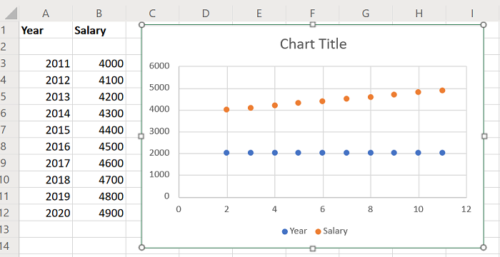

In columns or rows, using a combination of opening, high, low, and closing values, plus names or dates as labels in the right order. In columns, placing your x values in the first column and your y values in the next column.įor bubble charts, add a third column to specify the size of the bubbles it shows, to represent the data points in the data series. In one or multiple columns or rows of data, and one column or row of labels. Select the sheet holding your data and click the Create Chart From Selection button, as shown below. Look for Scatter Plot and click on the icon to get started, as shown below. Once ChartExpo is loaded, you will see a list of charts. This chart can use one or more data series. Select ChartExpo for Excel and click the Insert button to get started with ChartExpo. In one column or row, and one column or row of labels. This chart uses one set of values (called a data series). Either way, this table lists the best ways to arrange your data for a given chart.Ĭolumn, bar, line, area, surface, or radar chart You also may have your own charts in mind. The charts it suggests depend on how you’ve arranged the data in your worksheet. Arrange data for chartsĮxcel can recommend charts for you. Create a scatter plot from the first data set by highlighting the data and using the Insert > Chart > Scatter sequence. This will show the data values on those points. Steps: First, select the plot and click on the Chart Element button (the ‘ + ’ button).

Tip: If you don't want to include specific rows or columns of data in a chart, you can simply hide them on the worksheet, or you can apply chart filters to show the data points you want after you create the chart. When making a Scatter plot in Excel, you may want to name each point to make the graph easier to understand.


 0 kommentar(er)
0 kommentar(er)
